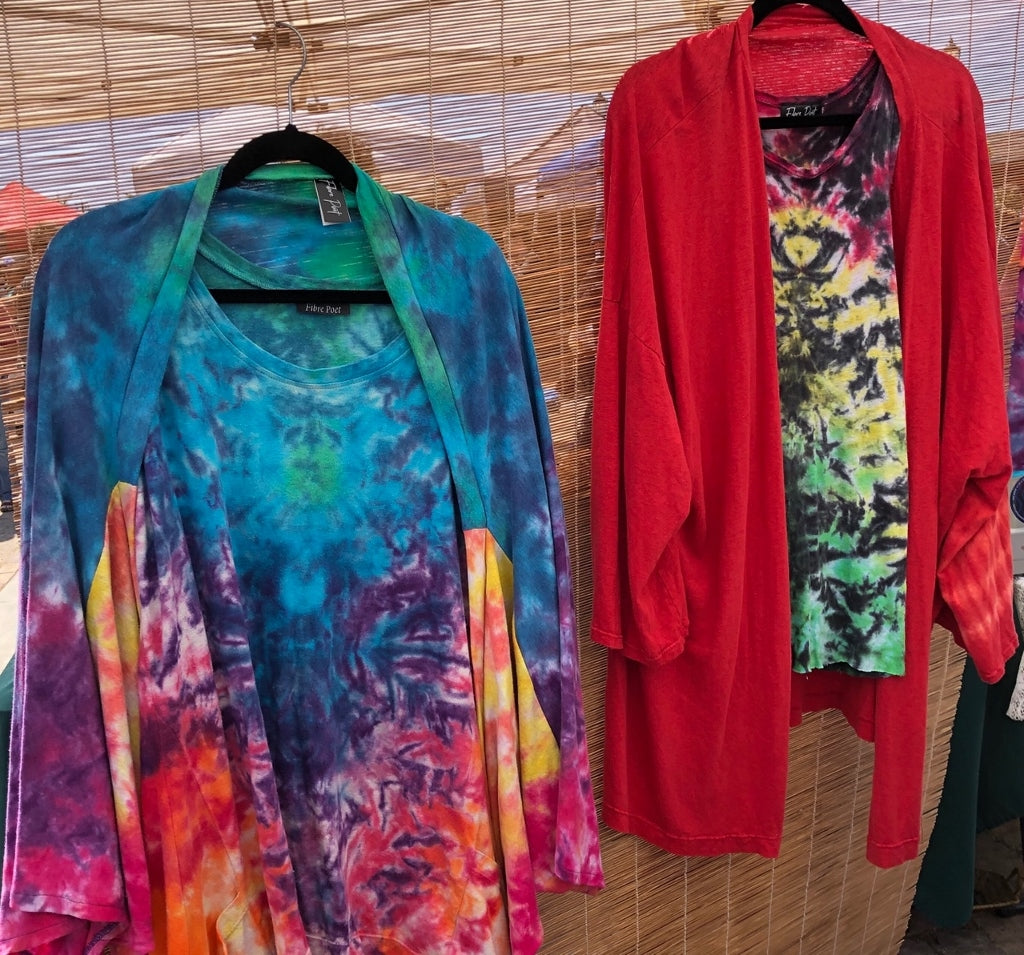Japanese Shibori Meets Contemporary Tie Dye

Living in Santa Cruz, California, in the early 1990's I was fascinated by festival tie dye. The local community college offered a class called Surface Textile Design, which I enrolled in. One of our first projects was folding scraps of fabric for an indigo dye vat. It was my first attempt at Shibori, a resist dyeing technique, involving shaping cloth and binding it.
Over the years I have accumulated a few books on the subject. My favorite, "Shibori - The Inventive Art of Japanese Shaped Resist Dyeing" (Wada, Rice, Burton) gives this definition:
"Shibori is a Japanese word which comes from the word shiboru which means to "wring, squeeze, press". The verb root of the word emphasizes the action performed on the cloth, the process of manipulating fabric. It is the pliancy of the textile and its potential for creating a multitude of shape resisted designs that the Japanese concept of shibori recognizes and explores".

This piece from my sample book shows an example of miru shibori (stitched circle) in the middle with kanoku (bound dots) around the edges. If you have ever admired a tie-dyed likeness of Jerry Garcia it was likely done using a stitched technique.
Another interesting book, is a catalog from the Los Angeles County Museum exhibit "When Art Became Fashion - Kosode in Edo Period Japan" which chronicles the history of the kosode, a garment now referred to as a kimono.
The kosode was essentially a blank canvas used by textile artists of the time to create wearable pieces of art. Similar to the modern kimono made of silk, the kosode was originally a simple robe worn by the working class * made of bast fibers or "asa", usually hemp or ramie. Cotton was not grown in Japan until the 1600's.

This kimono,made of 55% hemp, 45% organic cotton, was dyed using tesuji shibori (hand pleating).In this example the entire garment is submerged in a dyebath. Variations in color are created by areas that are bound with string which causes the fabric to resist the dye.
Most stripe style tie dyed t shirts use this style. In contemporary tie dye a direct application of the dye using squeeze bottles is used to apply different colors.
I love the idea of festival clothing. During the Edo period in Japan everyone wore their best kosode to festivals honoring traditions like cherry blossom or maple leaf viewing, to celebrate the New Year, or to attend Kabuki Theatre.
Although elaborate painted silk kosode were worn by the elite, the working class developed their own street style influenced by Kabuki actors and courtesans. Fans who wanted to emulate their favorite actors decorated their own clothing by adapting those they had seen on the stage.
This Festival Jacket was dyed using the "crunch" technique, with a direct dye application. I could not find a shibori term for this method. It is an example of contemporary festival tie-dye. Use coupon code "TIEDYE" for 20% off.
